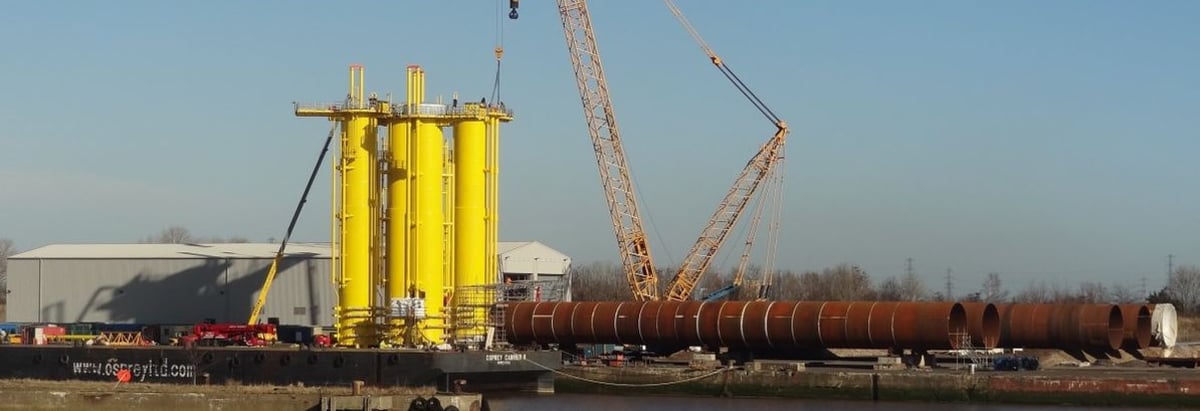- Norway
- /
- Energy Services
- /
- OB:EIOF
Eidesvik Offshore ASA (OB:EIOF): Risks You Need To Consider Before Buying

If you are a shareholder in Eidesvik Offshore ASA’s (OB:EIOF), or are thinking about investing in the company, knowing how it contributes to the risk and reward profile of your portfolio is important. Generally, an investor should consider two types of risk that impact the market value of EIOF. The first type is company-specific risk, which can be diversified away by investing in other companies to reduce exposure to one particular stock. The second risk is market-wide, which arises from investing in the stock market. This risk reflects changes in economic and political factors that affects all stocks.
Different characteristics of a stock expose it to various levels of market risk. The most widely used metric to quantify a stock's market risk is beta, and the market as a whole represents a beta of one. A stock with a beta greater than one is considered more sensitive to market-wide shocks compared to a stock that trades below the value of one.
See our latest analysis for Eidesvik OffshoreAn interpretation of EIOF's beta
Eidesvik Offshore's beta of 0.39 indicates that the stock value will be less variable compared to the whole stock market. This means that the change in EIOF's value, whether it goes up or down, will be of a smaller degree than the change in value of the entire stock market index. Based on this beta value, EIOF appears to be a stock that an investor with a high-beta portfolio would look for to reduce risk exposure to the market.
Does EIOF's size and industry impact the expected beta?
With a market cap of ØRE391.55M, EIOF falls within the small-cap spectrum of stocks, which are found to experience higher relative risk compared to larger companies. Furthermore, the company operates in the energy services industry, which has been found to have high sensitivity to market-wide shocks. As a result, we should expect a high beta for the small-cap EIOF but a low beta for the energy services industry. This is an interesting conclusion, since both EIOF’s size and industry indicates the stock should have a higher beta than it currently has. There may be a more fundamental driver which can explain this inconsistency, which we will examine below.
Is EIOF's cost structure indicative of a high beta?
During times of economic downturn, low demand may cause companies to readjust production of their goods and services. It is more difficult for companies to lower their cost, if the majority of these costs are generated by fixed assets. Therefore, this is a type of risk which is associated with higher beta. I examine EIOF’s ratio of fixed assets to total assets to see whether the company is highly exposed to the risk of this type of constraint. With a fixed-assets-to-total-assets ratio of greater than 30%, EIOF appears to be a company that invests a large amount of capital in assets that are hard to scale down on short-notice. As a result, this aspect of EIOF indicates a higher beta than a similar size company with a lower portion of fixed assets on their balance sheet. However, this is the opposite to what EIOF’s actual beta value suggests, which is lower stock volatility relative to the market.
What this means for you:
You could benefit from lower risk during times of economic decline by holding onto EIOF. Take into account your portfolio sensitivity to the market before you invest in the stock, as well as where we are in the current economic cycle. Depending on the composition of your portfolio, EIOF may be a valuable stock to hold onto in order to cushion the impact of a downturn. In order to fully understand whether EIOF is a good investment for you, we also need to consider important company-specific fundamentals such as Eidesvik Offshore’s financial health and performance track record. I urge you to complete your research by taking a look at the following:
- Future Outlook: What are well-informed industry analysts predicting for EIOF’s future growth? Take a look at our free research report of analyst consensus for EIOF’s outlook.
- Past Track Record: Has EIOF been consistently performing well irrespective of the ups and downs in the market? Go into more detail in the past performance analysis and take a look at the free visual representations of EIOF's historicals for more clarity.
- Other High-Performing Stocks: Are there other stocks that provide better prospects with proven track records? Explore our free list of these great stocks here.
Valuation is complex, but we're here to simplify it.
Discover if Eidesvik Offshore might be undervalued or overvalued with our detailed analysis, featuring fair value estimates, potential risks, dividends, insider trades, and its financial condition.
Access Free AnalysisHave feedback on this article? Concerned about the content? Get in touch with us directly. Alternatively, email editorial-team@simplywallst.com
Simply Wall St analyst Simply Wall St and Simply Wall St have no position in any of the companies mentioned. This article is general in nature. We provide commentary based on historical data and analyst forecasts only using an unbiased methodology and our articles are not intended to be financial advice. It does not constitute a recommendation to buy or sell any stock and does not take account of your objectives, or your financial situation. We aim to bring you long-term focused analysis driven by fundamental data. Note that our analysis may not factor in the latest price-sensitive company announcements or qualitative material.
About OB:EIOF
Eidesvik Offshore
Provides services to the offshore supply, subsea, and offshore wind market in Norway.
Excellent balance sheet with questionable track record.
Similar Companies
Market Insights
Community Narratives





